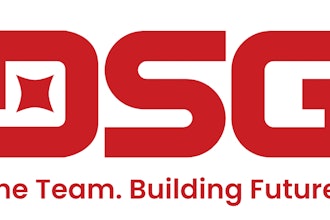This is the second half of this article. View Pt. 1 here.
Wholesale distributors are seeing their addressable markets change shape and focus at an ever-increasing speed. For example, distributors’ business models are being significantly impacted by the recent rapid growth and adoption of ecommerce. Customers are becoming increasingly comfortable with buying products online so much so that the type and volume of products they are unwilling to purchase via the Internet continues to shrink daily. Distributors are having to quickly develop an ecommerce presence or risk losing potential business and customers.
When buying from distributors, customers anticipate a seamless purchasing experience and to be alerted if there are any supply chain issues. In order to deliver on customer expectations, distributors need to work even more collaboratively than previously with manufacturers, suppliers, and retailers so that everyone involved in the supply chain shares and has access to real-time customer and product information including inventory.
Five Emerging Trends Reshape Distribution
I believe there are five distinct emerging trends, each with strong ties to e-commerce, which are morphing and will continue to reshape the entire wholesale distribution industry. Distributors need to quickly take advantage of all five trends in order to stay competitive and relevant. You can view Nos. 1-3 here.
4 - Distributors Expand Their Global Horizons. In ‘The Outlook for Wholesale Distribution in 2014’ whitepaper sponsored by NetSuite and produced by Modern Distribution Management, distributors were surveyed on their plans to increase revenue in the coming year. While, not surprisingly, 48.2 percent of those polled looked to grow revenue from their existing customer base, 24.4 percent intended to add new geographies or territories, and 10.4 percent planned to expand internationally. Entering any new market requires plenty of research upfront into how best to appeal to customers in that region. Distributors will also need to ensure their ecommerce presence includes full multi-lingual and multi-currency support as well as complying with local tax regulations and data privacy legislation.
Actionable advice: What some distributors fail to consider about globalization is that it works in two directions — not only can a distributor open up their addressable market by expanding internationally, but they may well have to contend with new competitors as international players enter the distributor’s home market. So, it’s doubly important for distributors to have control over and insight into their international operations so they can determine strong and weak performing regions and base business decisions on real-time data as to when it makes economic sense to expand or contract local presence.
5 - Previous Solid Lines or Divisions between Industries Blur. In response to this current period of intense change, all kinds of companies are re-examining their business focus and then choosing to expand or refine that focus. In some cases, an expansion of focus will lead to new vertical markets, for instance, a wholesale distributor or a manufacturer may enter the retail space with a direct-to-consumer ecommerce operation in hopes of a new source of revenue. Some expansions will be homegrown and others will involve mergers and acquisitions, the latter involving all the inherent complexity of integrating one or more companies into an existing distributor. NetSuite customer medical technology company EndoChoice with headquarters in Atlanta, Ga., began life as a commodity distributor of medical and surgical supplies. After acquiring first a manufacturing business and then later adding a services and repair operation, EndoChoice today provides complete self-branded kits for gastrointestinal procedures. With all the products coming from a single source – EndoChoice itself – the company is able to meet infection control compliance standards and it provides a clearly differentiated service to caregivers who can choose which supplies are in the kit they purchase.
Actionable advice: As brand-new players enter the distribution arena, distributors will need to quickly react to fresh competitive threats and consider whether or not they need to refocus their own businesses. Distributors must also work more with predictive models to plan for the impact of today’s partners becoming tomorrow’s competitors as manufacturers and suppliers may look to circumvent distributors by selling directly to consumers and other customers.
Turn to the Cloud to Enable Agility and Adaptability
For distributors running their companies on aging, on-premise, and disparate business management systems, quickly responding to the five trends outlined above will prove difficult, if not, impossible. In order to adapt to change, distributors need flexible, unified systems that can easily scale up (and down, if needed) and are highly modular. A cloud-based system like NetSuite, is able to support the changes distributors need to make to their businesses, whether it’s the addition of mobile support, B2B ecommerce, and/or more global functionality as well as supporting changes to reporting structures and the addition of new international operations and new industry capabilities. A distributor’s business management systems should enable change, not act as a barrier to transformation.
As distributors make the move from on-premise to cloud systems, there are several key areas to keep top of mind — training, business processes, and customization — in order to ensure a successful migration. When it comes to training, distributors must invest in change management to educate employees fully on the capabilities of the new systems and to root out any workarounds previously required by the old systems. As part of the move to the cloud, distributors should re-evaluate existing business processes and determine how they can be streamlined and more completely automated. Distributors should also consider how and where to apply customization in their new cloud-based system, whether at the field, table, workflow, or app level. They should think about using customization as a way to help differentiate their business in order to provide competitive advantage.
In Conclusion
The wholesale distribution industry is part-way through an intense period of flux which is requiring all distributors to make significant changes to their business so that they can quickly respond to shifts in customer buying patterns, partner relationships, and the global economy. It used to be that the business experience informed and drove the consumer experience. Now, however, the situation is completely reversed and distributors need to step up and provide consumer-grade user experiences particularly in relation to ecommerce as online sales continue to grow. Distributors need to run adaptable and agile businesses both to meet customers’ expectations and to keep one or more steps ahead of much larger competitors who have the potential to shrink or cut markets away from under their feet. Distributors must also make much better use of their industry knowledge, their existing partnerships, and customer relationships, and fashion all that rich data into a competitive weapon which they can then wield as a differentiator.























